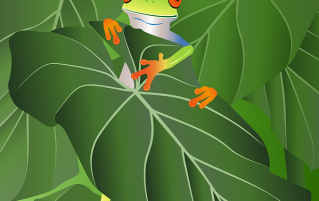

The circulatory system isn’t just about the heart. It includes all of the blood vessels which carry the blood around the body. Different animals have very different systems.
The cockroach, for example, like many insects has what is known as an open circulatory system. This means that it does not have vessels to carry the fluid, instead it reaches the tissues directly. The fluid does not contain haemoglobin, is yellow or white and is known as haemolymph, not blood. Unlike us, they breathe through openings called spiracles in their bodies, and don’t need to carry oxygen through the blood. The haemolymph carries nutrients around.
Frogs have only three chambers in their hearts, two atria and one ventricle. Within their one ventricle they have grooves separating the oxygenated from the deoxygenated blood. Frogs also take advantage of the fact that they can take in oxygen through their skin as well as their lungs!
Freeze-tolerant frogs stop their hearts completely during the winter. If temperatures fall low enough, and ice forms on the frog’s skin, a series of events is triggered. The frog’s liver will convert glycogen into glucose, and take it in the blood to every cell. This prevents the cells completely dehydrating and shrinking. The heart continues to pump the glucose around the body while it is freezing, until it slows and stops. All the organs stop working, and as much as 70% of the water in the frog can be frozen. The frog appears to be dead! They can survive the whole winter in this state, until they thaw. Then within one hour, the heart begins to beat again.
The heart of a blue whale is enormous – the size of a small car! It needs to be, as it has to supply blood to animals the length of two school buses. When the whale dives into the sea, it can slow its heart rate to just 4 beats per minute. This means they can dive for longer periods of time and avoid the bends!
GCSE biologists, if you need help with understanding the blood, and blood vessels, try our new guide “How to work with the Circulatory System: Part 2”. It includes a description of the main parts of the blood, their functions, and the difference between arteries, veins and capillaries. There are questions and answers included.
Click on the picture below:
If you found this useful and think you would benefit from some additional help, please contact us.
We welcome guest bloggers.
